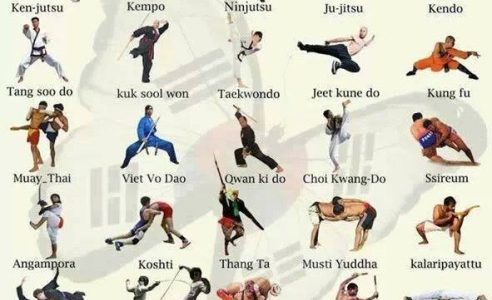The International Journey And Growth Of Martial Arts Throughout History
The International Journey And Growth Of Martial Arts Throughout History
Blog Article
Authored By-Hess Graham
Martial arts have a fascinating history that covers centuries and continents. You may find it fascinating how ancient methods like Shuai Jiao and Kalaripayattu laid the groundwork for modern battle strategies. These disciplines not only stress physical skills however additionally reflect the societies that birthed them. As you explore their development, think about how globalization has actually changed these standard types into hybrid styles. What influences do you think have formed today's martial arts landscape?
Ancient Martial arts: The Foundations of Battle
As you delve into the globe of ancient martial arts, you'll find the abundant foundations that formed battle strategies across societies. Early practices concentrated on Self-Defense and survival, often including strikes, grappling, and weaponry.
In old China, for example, strategies like Shuai Jiao stressed throws and joint locks, while India's Kalaripayattu showcased agility and fluid movement. Japanese samurai developed Kenjutsu, a polished swordsmanship that highlighted technique and technique.
These martial arts served not just for battle yet also as a way of individual development, instilling worths like respect and perseverance. The mixing of these techniques gradually prepared for the diverse martial arts you see today, each mirroring the distinct approaches and needs of its society.
The Cultural Influence on Martial Arts Advancement
While martial arts commonly reflect the useful needs of a culture, they additionally embody the social worths and beliefs of their beginnings. When https://apnews.com/article/fighter-nate-diaz-arrested-new-orleans-d0dcfa42fd0518ace09e3f2709ad7140 check out different martial arts, you'll see how they're influenced by religion, philosophy, and social standards.
For example, the focus on respect and self-control in Japanese martial arts comes from Zen Buddhism and samurai culture. In contrast, Brazilian Jiu-Jitsu advertises versatility and method, formed by the requirement for efficiency in a diverse, multicultural environment.
You might locate that the routines, attires, and training techniques reflect an area's background and identity. By recognizing what style clothing should my kid wear for martial arts , you strengthen your appreciation of martial arts and their function in shaping human experiences across the globe.
Modern Adaptations and the Globalization of Martial arts
Martial arts have actually changed dramatically in current decades, adjusting to contemporary society and international influences. You'll observe that standard forms have mixed with contemporary methods, producing hybrid styles like mixed martial arts. These adaptations accommodate diverse audiences, making martial arts available and appealing globally.
With the increase of social networks and digital systems, you can find tutorials and competitions from all corners of the world, breaking geographical barriers. This globalization has caused a shared appreciation for different self-controls, from Brazilian Jiu-Jitsu to Taekwondo.
As you engage with these arts, you'll realize they're not nearly battle; they promote health and fitness, discipline, and psychological well-being.
Ultimately, modern adjustments have enhanced the martial arts landscape, making it a vibrant and evolving practice.
Verdict
In exploring the background and evolution of martial arts, you uncover a fascinating blend of methods, cultures, and viewpoints. From ancient disciplines like Shuai Jiao and Kalaripayattu to the contemporary versatility seen in mixed martial arts, martial arts show mankind's quest for Self-Defense and personal development. As you involve with these methods, you not just gain skills however additionally a deeper gratitude for the diverse traditions that form our world today. So, continue your journey and embrace the art of battle!
